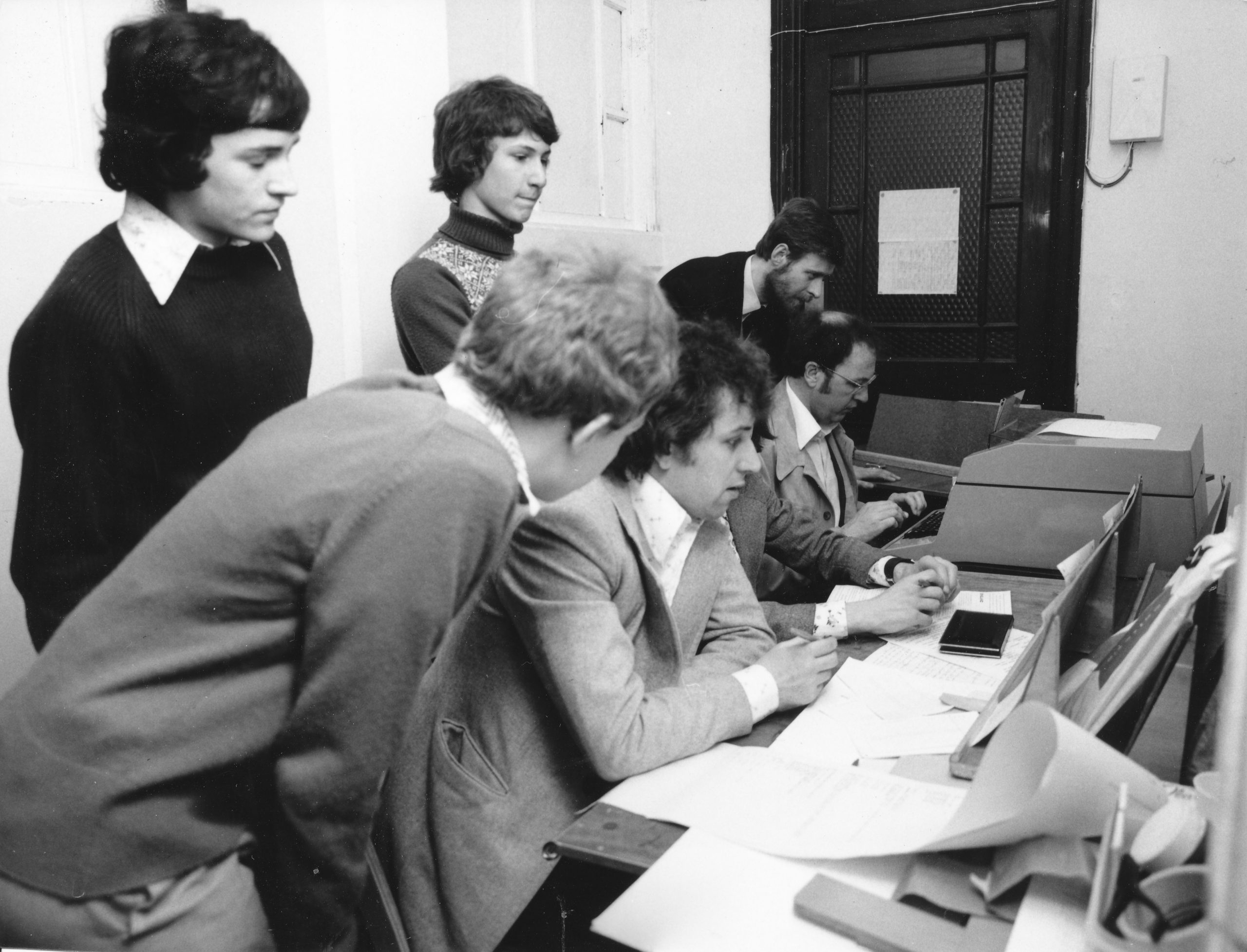
BCN wishes Happy Birthday to FM Simon D Brown (14-x-1960)
BCN remembers Charles Fox (09-xi-1866 11-x-1935)
Charles Masson Fox was born on Friday, November 9th 1866 in Falmouth, Cornwall. his father, Howard, was 29 and his mother, Olivia Blanche Orme, was 22. He had one brother and two sisters.
His sister Olivia Lloyd was born on 5 February 1868 in Falmouth, Cornwall, when Charles Masson was 1 year old. His sister Stella was born on 11 December 1876 in Falmouth, Cornwall, when Charles Masson was 10 years old. In 1881 he was living in Sherborne, Dorset. In 1901 he was once more living in Falmouth and his profession was that of a timber merchant. His brother Howard Orme died on 7 June 1921 in Falmouth, Cornwall. His father Howard passed away on 15 November 1922 in Cornwall. His mother Olivia Blanche passed away on 12 March 1930 in Falmouth, Cornwall, at the age of 85.
Sadly, neither Hooper & Whyld, Sunnucks or Golombek mention Fox in their works.
Here is an extensive article from the British Chess Problem Society (BCPS) written by CJ Feather
From Wikipedia :
“Charles Masson Fox (9 November 1866 – 11 October 1935) was a Cornish businessman who achieved international prominence in the world of chess problems and a place in the gay history of Edwardian England.
Masson Fox was born into a Quaker family (although he was not related to the Quakers’ founder George Fox) and was a cousin of the fraudulent sinologist Sir Edmund Backhouse, 2nd Baronet. Living throughout his life in the Cornish seaside town of Falmouth, Fox in the early decades of his life was a senior partner of his family’s timber firm, Fox Stanton & Company, and was also on the Board of Messrs G C Fox & Company, a long-established firm of shipping agents.
C.M.Fox’s gravestone at Budock Quaker Burial Ground
Fox is described by chess historian Thomas Rayner Dawson (1889–1951) as “a friendly man, kind, mellow, lovable, bringing peace and comfort and serene joy with him”. He was also a discreet but active homosexual. In 1909 he visited Venice with his friend James Cockerton, meeting the writer Frederick Rolfe and becoming the reluctant recipient of Rolfe’s famous Venice Letters, in which the gay subculture of Venice is vividly described.
In 1912–13 Fox was blackmailed by a woman who accused him of seducing her 16-year-old son. Eventually Fox reported the matter to the police and the woman was sent to prison for five years and her son for one year, with hard labour.[1] However, Fox was profoundly affected by the publicity surrounding the case, which was reported in detail in the local press. The predictable result of his courageous action was the destruction of his reputation, and the compromise of his business and social life in Falmouth.
Although he continued to live in Cornwall, the focus of his social life shifted to London, and in the last two decades of his life, Fox became prominent in the world of chess. He was elected President of the Cornwall Chess Association, played a prominent part in the development of the British Chess Problem Society, and is still renowned as one of the greatest ever exponents of fairy chess (chess problems with variations in the rules).”
From The Problemist Fairy Chess Supplement, 1933 :
What is the shortest game
ending in this position?

We send best wishes to WFM Sarah Natasha Longson (née Hegarty) on her birthday this day, (October 2nd) in 1988.

From Sarah’s web site :
“I have played competitive chess since the age of 7 when I became UK U7 Girls Chess Champion and appeared on Blue Peter where I met the then world champion Garry Kasparov. Since then I have represented England in many international competitions and in 2013 won the British Ladies Championship.”
In 2016 Sarah and partner FM Alex Longson made a successful bid for ownership of the UK Chess Challenge which was auctioned by the bankruptcy receiver of IM Mike Basman, the previous owner.
Sarah and Alex have modernised the UKCC considerably especially in the areas of communications and usage of IT.
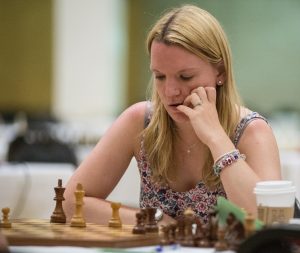
According to the ECF Sarah’s nominal club is Marple but she also plays for Stockport and 4NCL 3Cs.
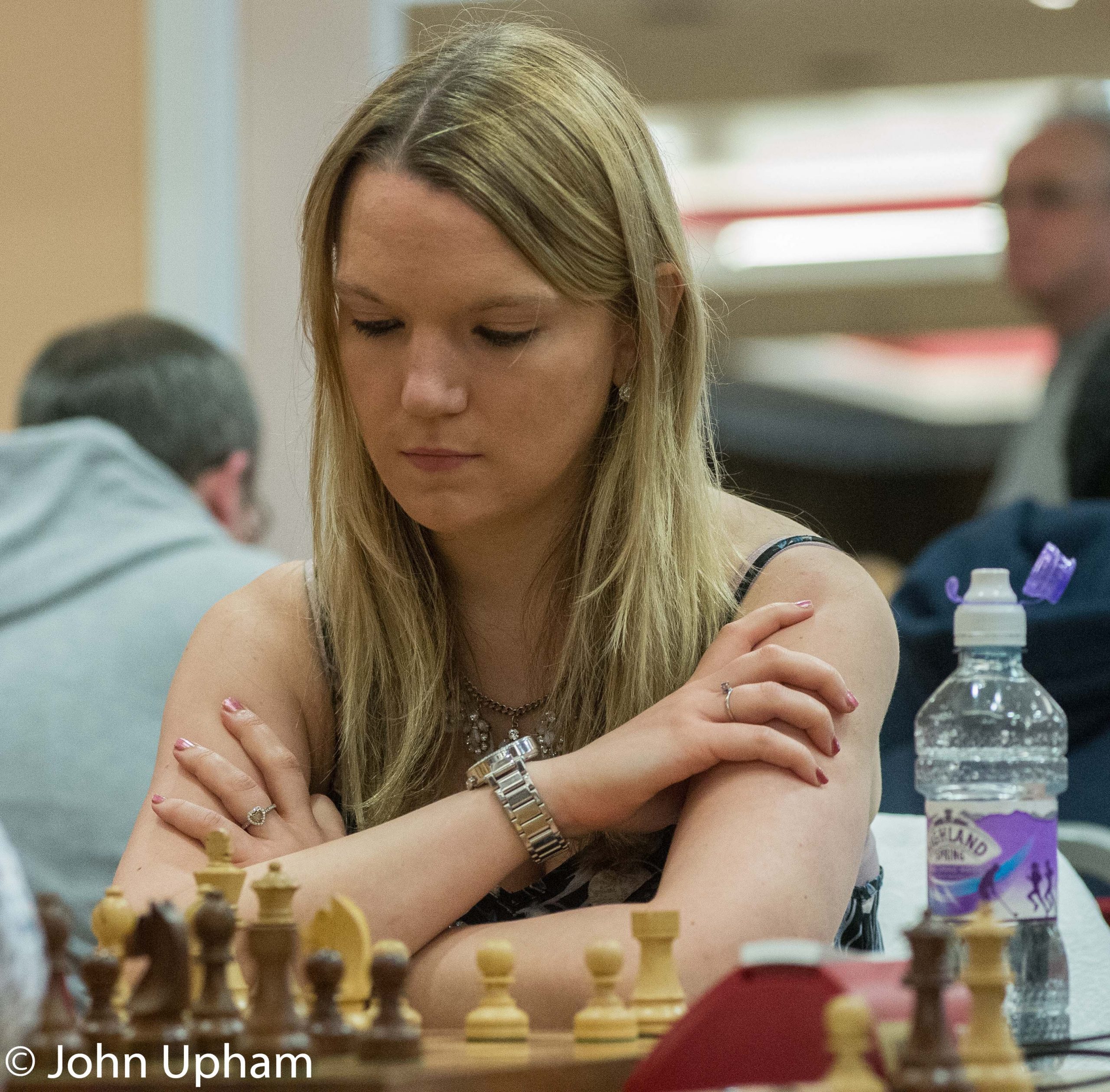

We send best wishes to Richard Kenneth Guy on his 102nd birthday, this day (September 30th) in 1916
From Wikipedia :
Richard Kenneth Guy (born 30 September 1916) is a British mathematician and professor emeritus in the Department of Mathematics at the University of Calgary.[1] He is known for his work in number theory, geometry, recreational mathematics, combinatorics, and graph theory.[2][3] He is best known for co-authorship (with John Conway and Elwyn Berlekamp) of Winning Ways for your Mathematical Plays and authorship of Unsolved Problems in Number Theory.[4] He has also published over 300 papers.[5] Guy proposed the partially tongue-in-cheek “Strong Law of Small Numbers,” which says there are not enough small integers available for the many tasks assigned to them – thus explaining many coincidences and patterns found among numerous cultures.[6] For this paper he received the MAA Lester R. Ford Award.[7]
From 1947 to 1951 Guy was the endings editor for the British Chess Magazine.[40] He is known for almost 200 endgame studies. Along with Hugh Blandford and John Roycroft, he is one of the inventors of the GBR code (Guy–Blandford–Roycroft code), a system of representing the position of chess pieces on a chessboard. Publications such as EG magazine use it to classify endgame types and to index endgame studies.[41]
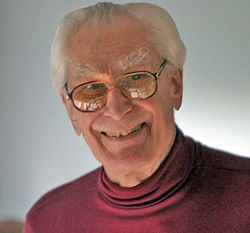

A glorious Saturday (the 14th) in September was the date and Camberley Baptist Church was the location of the third tournament in memory of correspondence Grandmaster Keith Bevan Richardson.

A field of thirty-two gathered at the home (since 1982) of Camberley Chess Club for a six round rapid-play event (R20′ + 10″) that was free to enter raising money by donations to The Cure Parkinson’s Trust. Players were invited to choose books from Keith’s library

and donate to charity in return.

Top seed was recently qualified IM Adam C Taylor (ECF230)
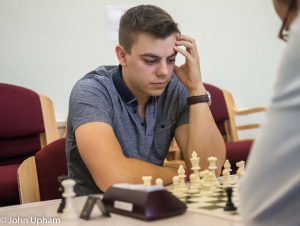
whose chances were dented by losing in round 4 to Clive Frostick (Farnham) who, like Keith, was a highly successful correspondence player (a SIM : Senior International Master)

Other pre-tournament favourites were FM Andrew P Smith (IRE and Bourne End)

and FM Richard M Webb (Crowthorne)

along with WFM Louise Head (Crowthorne)
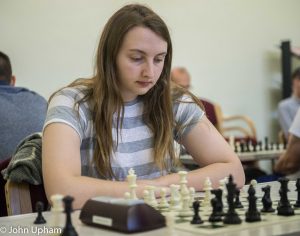
Following three rounds we stopped for lunch (in some cases liquid only) and on 100% were Adam, Clive and Andrew so round four could well be a key decider. Clive beat Adam with the white pieces whereas Andrew and Richard drew a hard fought Sicilian Dragon. In round five Clive breathed a sigh of relief to survive a “dodgy” position against Colin Purdon in one of the candidate games for the “Best Swindle” Prize.

The drama continued into the final round as Adam beat strong junior Ranesh Ratnesan
and everything hinged on Clive’s game with Richard Webb. After a long and interesting struggle the game was drawn and the tournament was decided.
The award for Best U-150 player went to rapidly improving Jessica Mellor (Guildford)
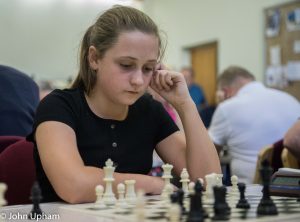
the award for Best Junior went to Radesh Ratnesan (Surbiton)
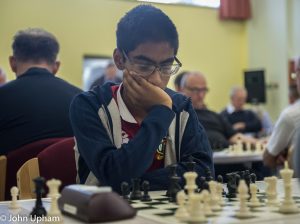
and the title of Camberley Chess Club Champion (highest placed local player) went to Colin Purdon

In overall first place with 5.5/6 was Clive Frostick :
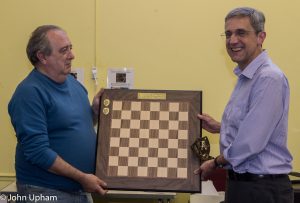
The event collected more than £300 for the Cure Parkinson’s Trust and we are sure Keith was looking down from above and was pleased with what he observed.
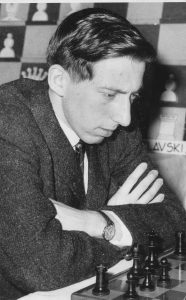
Past Winners of Keith Richardson Memorial :
2017 : Julien Shepley
2018 : Ken Norman
2019 : Clive Frostick
Full results may be found from UTU Swiss
Camberley Chess Club would like to thank :
Camberley Baptist Church, Berkshire Junior Chess Association, Ken Coates and Christine Coates.
The organiser was John Upham.
He was British Correspondence Champion in 1972 and awarded the IMC title in 1981.
According to Kings Indian I Attacking Systems :
“British Correspondence Champions 1971/72. Placed second in an ICCF master tourney 1973/76. A member of the British team in the 9th Olympiad 1977/80. Gained the IMC title in the European Team Championship 1978/81.”
According to Chessbase Correspondence Database 2020 Frank achieved his highest (ICCF) rating in January 1991 of 2410.

As White Frank would play the Queen’s Gambit via a 1.Nf3 move order. He did not play 1.e4
As the second player he would defend the closed Ruy Lopez and the Nimzo-Indian Defence.
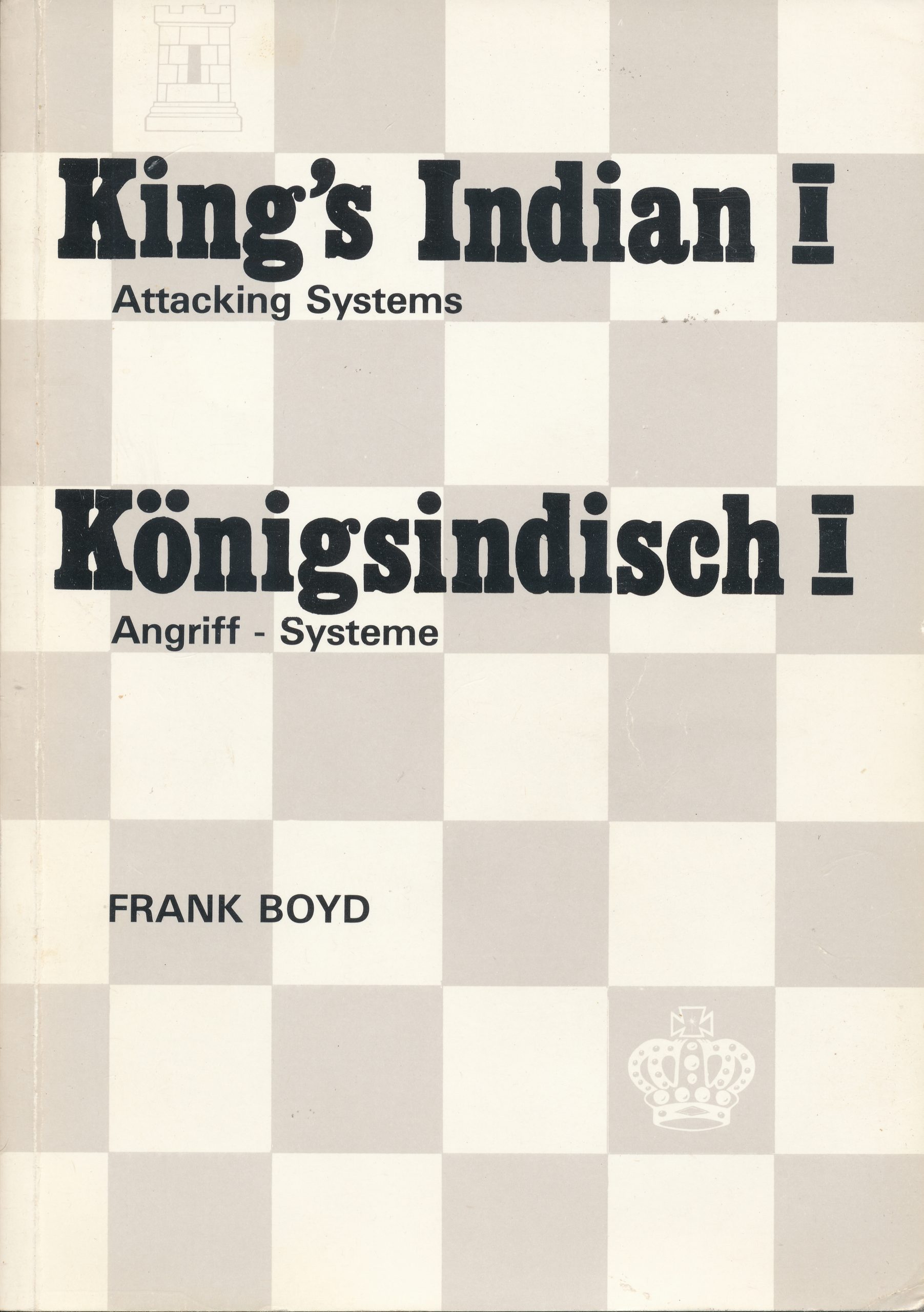

Sixty-four (!) players entered the South-West qualifier for the British Blitz Championship 2019 held at Bristol Grammar School for a fifteen round tournament employing a 3′ + 2″ FIDE approved time control.

The entry was headed by GM Matthew Turner (SCO) scoring 13.5/15 and gaining a mere 8.8 FIDE Blitz rating points drawing quickly with Keith Arkell and losing to FM Lewis Martin (ENG).
Paignton based “local” GM Keith Arkell (ENG) took runner-up spot with 12/15 losing 15 rating points having drawn with Lewis Martin but losing to in-form IM James Cobb (WLS) and IM Malcolm Pein (ENG). Malcolm’s son Jonathan elected to play in the much weaker Belfast qualifier which was probably a good move.

Highest placed lady player (and therefore qualifier) on 8.5/15 was University of Warwick student and reigning English Ladies Champion, WFM Louise Head (ENG) who was supported by her Crowthorne team mates FM Richard Webb, Colin Purdon and Mark Taylor.

Surprise performance (perhaps?) was from FM Lewis Martin (title awarded in 2018) who beat Matthew Turner, Malcolm Pein, Richard Webb and Louise Head of the titled players to earn a 64.8 rating increase.
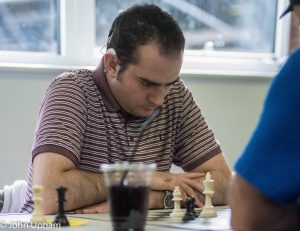
Full results may be found at Chess Results . com
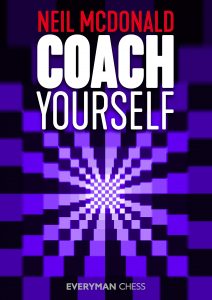
Neil McDonald is an English GM, an active player, a FIDE Trainer and a coach to the England junior teams. Neil has authored thirty-seven books for The Chess Press, Batsford and, most recently, Everyman Chess. One of his most recent works, The King’s Indian Attack : Move by Move, impressed considerably.
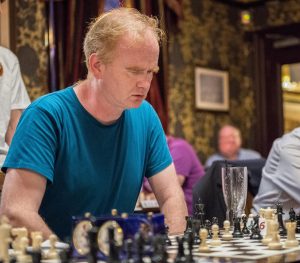
“Coach Yourself” is a new direction for the author whose previous titles have concentrated on specific openings and generic middlegame themes.
The Introduction reveals the book’s USP (Unique Selling Point) of enabling the reader to become their own personal coach in a wide range of sub-disciplines of the game. You might think “All chess books attempt to teach at least one aspect in detail surely?” So, does “Coach Yourself” achieve its ambitious aim ?
The author sets outs his course curriculum in thirteen precisely worded chapters as follows :
Of these, probably half of them at least could almost be titles for books in their own right. “Teaching Yourself to Calculate” probably could turn into a 300 page book without any problem : indeed, such titles do exist. Similarly “Making Good Opening Choices” must have appeared in chess publishing history at some point. The order in which the chapters are presented is, in itself, quite logical and correctly emphasizes perhaps the weight that students should attach to each section. For example, the subjects of these chapters do attempt to correct the balance of study away from openings and towards the more challenging and time consuming middlegame.
This review would be really rather unwieldy if we attempted to work through each chapter so we will select a couple of chapters to measure their coverage and style.
The author kicks-off logically with “Immunizing Yourself Against Blunders” suggesting that blunders tend to disappear once a serious study is started. Most of the instruction is centered around the study of example games in which common types of blunder occur. The student is invited to get into the habit of playing though the entire or part of eleven games on a board and learn the common patterns and themes that lead to oversights and blunders.
Here is an extract of an example :
Above All, Look After Your Queen!
VI. Fedoseev-A.Ledger
European Cup, Porto Carras 20181.e4 c6 2.d4 d5 3.e5 Bf5 4.Nd2 e6 5.Nb3 Nd7 6.Nf3 Ne7 7.c3 Ng6 8.Be3 Nh4 9.Nxh4 Qxh4 10.Be2 Qe4 11.h4 h6 12.h5
Here 12…Qxg2? would allow the queen to be trapped by 13.Bf3, so the best move might be 12…Qc2, forcing the exchange of queens, after which White would only have a small edge due to his space advantage. Instead, Black played the natural developing move 12…Be7?, when 13.Rc1! closed off the c2-square and left his queen suddenly trapped. The threat is 14.Nd2 Qxg2 15.Bf3, and 13…Bh7 14.Nd2 Qf5 15.g4! also does the business for White (what an ignominy for a queen to be trapped by a peasant!).
In the game Black good find nothing better than giving up the knight for two pawns with 13…Nxe5 14.dxe5 Qxe5. Fedoseev was remorseless in pressing home his advantage (one of the signs of a top player is that they don’t relax once they have gained material): 15.Qd4 Qxd4 16.cxd4 Bb4+ 17.Bd2 Bd6 18.g4 Bh7 19.Rh3 Kd7 20.Na5 Rab8 21.Rb3 Kc7Question : Can you see the most precise finish for White?
The game concluded 22.Ba6! bxa6 23.Rxc6+ Kd7 24.Rxd6! 1-0, since 24…Kxd6 25.Bf4+ (skewering the black king against the b8-rook – there’s more on this theme in Chapter Two) 25..Kd7 26.Bxb8 is too much for Black to bear.
Fedoseev’s 22nd move, laying the foundations for the combination which followed, was inspired. Don’t worry if you didn’t see it. The purpose of the next chapter is to introduce you to various tactical themes so that you can start planning your own combinations.
So the 11 examples set one up for the more challenging content to follow.
Some chapter titles particularly intrigued us : “Getting Full Value from your King” was one example plus “Learn How to Shut a Piece Out of the Game”. For each and every chapter there is a consistent method of presenting the content : Many instructional examples each containing questions that the student is challenged to answer. Some are straightforward and many are tough. They will get you thinking in every case.
All the material is presented in a friendly style almost as if you are engaged in a coaching session with the author himself and he is asking the questions and you are answering (hopefully!). The examples span games from the last hundred years including losses by the author that presumably made their mark. One of the best aspects of this book is each chapter is more or less self contained and does not depend on previous ones or what comes afterwards. Just picking out the endgame chapters only would be highly beneficial (for example) and then pick out chapters from the rest when you have the time.
We particularly enjoyed the “Getting Full Value From Your King” and “Supercharging Your Feel for the Initiative” chapters as being novel. You will, no doubt, have your own favourites.
As with every recent Everyman Chess publication high quality paper is used and the printing is clear. Each diagram is clear as is the instructional text. Figurine algebraic notation is used throughout and the diagrams are placed adjacent to the relevant text.
A couple of small gripes with the production are : the diagrams do not have a “to move” indicator. secondly, some Everyman books (but not this one) have an extra folding part to the front and rear covers. These we find protect the book from damage and also can be used as an emergency book mark !
So, does the content bear out the title? The material includes novel and challenging content covered from new angles. However, the answer to this difficult question lies with the student and to their level of motivation. Neil has given the student much hard to obtain advice combined with a Q&A format that allow the student to measure their improvement in understanding.
There is no doubt that this book presents perhaps 100 hours of instruction and opportunities to improve: sadly, we have not had 100 hours available to spend on this review!
However, we very much enjoyed this book and if you are not afraid of the challenge then you will too!
John Upham, Cove, Hampshire, 31st August, 2019

Book Details :
Official web site of Everyman Chess
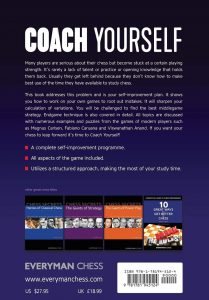
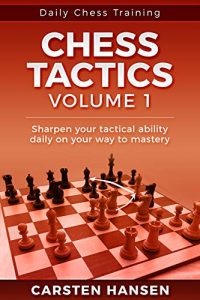
Cartsen Hansen is a Danish FIDE Master, FIDE Trainer and author of twenty-eight chess books on all phases of the game. He is a columnist for American Chess Magazine and Shakbladet.

Chess Tactics is a volume in the series Daily Chess Training the content for which is largely drawn from the authors spaces on various social media platforms such as Facebook, Twitter and Instagram.
The book is self-published and our copy was printed by Amazon Fulfillment which we believe is a low cost method to get books printed with lower volume print runs than you might associate with a so-called main stream publisher. Being a paperback that is fairly thick compared with its other dimensions, it means weights are required to keep the book open hands-free style, unless you want to break the spine. Maybe no other review will mention this but the convenience of reading the book makes a difference for us. It should be noted that a Kindle version is also marketed for those who prefer an eBook format. The printing is fairly clear on off-white paper. What stood out to us immediately was the murkiness / clarity of the diagrams. To be fair to the author we did report this and he has taken this up with his printers.
The main content is divided into seven chapters which have the same rough format of sixteen sets of exercises with four exercises (on average) per set.
For each individual exercise there is a diagram of the starting position, a rating in the forms of asterisk symbols from 1 – 5 where * is straightforward (but not trivial) and ***** means “industrial strength” difficulty. Under the rating is an indicator of who is to move and finally a hint such as
hint : Surprising Consequences to a simple plan.
It is possible to cover up the hint with something handy such as a beer mat (!) should you chose to avoid it.
Following each group of say four exercises there is a solution which usually includes in-depth analysis plus details of the provenance of the game itself.
We could be wrong but every one of the 404 exercises appears to be from 2018 tournament, league or match practice. The author deserves to be congratulated for this aspect alone and this means is it not likely you will have remembered any of the exercises from elsewhere : respect ! Of course, 2018 was an olympiad year which must have helped enormously especially in terms of large disparity in playing strength of the two players.
The overall ethos of the chosen exercises appears to be tactics / combinations that occur in typical games played by mortals leading to winning or large edge positions. In other words they are very pragmatic choices of “meat & potatoes” strong moves rather than jaw-dropping moves that feature in tactics books time and time again.
The author makes it clear that he values feedback and he provides various ways to make contact via his email address and various social media locations. We received an answer to a query within the same day.
Let us examine some examples :
Set 49
Exercises to Set 49
49.1)
**
White to move
Hint : Making room for the right strike
and the solution is :
13.d5!
This clever move takes aim at a surprising piece.
13…Bxd5 14.Nxd6+!
Of course, not 14.Qxd5?? Bb4+.
14…Qxd6 15. Qe3+!
Yes, It is the rook on a7 that’s the target !
15…Kd7 16.Qxa7
Black could have resigned here but dragged the game on to move 20 against her much lower rated opponent.
16…Nc6 17.Qe3 Re8 18.Qd2 Bxf3 19.gxf3 Nd4 20.Qxd4 1-0
A.Avramidhou (2260) – V. Gunina (2528)
Chess Olympiad (women) (Batumi) 2018
and here is a one star problem :
10.3)
and he solution is
16.Bxe6! Nd5
Or 16…fx6 17.Qxe6+ Qe7 18. Qxc6+ Kf7 19.Ne5+
17.Be5 Also 17.Ne5 wins. After 17.Be5 fxe6 18.Bxg7 Rh7 19.Qxe6+ Ne7 20.Qf6, Black is toast.
1-0
C. Bauer(2644) – M. Apicella (2501) Cannes (rapid) 2018.
and, finally an “industrial strength” exercise :
76.2)
and the solution is :
28.d5!
This threatens Bxg7 followed by Qe7+ and game over for Black.
28…Nc3 29.Ba2!!
Without this move White has nothing – did you see it?
29…Qxa2 30.Bxc3 e5
Or 30…Bxc3 31.Qh7+ Kf8 32. Qxb7 and White is winning.
31.Bxe5 Bxe5 32.Qh7+ Kf8 33.Nxe5 White is, of course, completely winning. 33…Bxd5+ 34.Kg1 Bf7 35.Qh8+ Ke7 36.Nc6+ 1-0
M. Parligras(2645) – S.Grigoriants (2543) Hungarian Team Ch. 2018.
There follows an Index of Players and two of these players (Stamy and Sindarov) have five games referenced each. The bulk of the players are not therefore super elite players but mortals.
In summary, this selection of 404 graded exercises covers all of the most common tactical themes plus some rarely encountered ones from modern practice. The commentary for each exercise is detailed enough. The exercises are not grouped according to any particular theme so you are not “expecting something” : you actually have to work it out from scratch in keeping with a real game.
We’d like to see clear diagrams but maybe our reviewer needs to visit Specsavers ! Overall this is good book, packed with original material delivered with a unique style. It will improve your chess ! We look forward to Volume 2….
John Upham, Cove, Hampshire, 29th August, 2019

Book Details :
Official web site of Carsten Chess


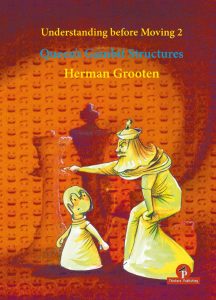
Herman Grooten is an International master, a professional coach for over thirty-five years and has taught players such as Loek van Wely, Jan Werle and Benjamin Bok.

The is the author’s second volume in the Understanding Before Moving series previously having written Understanding before Moving 1 : Ruy Lopez – Italian Structures
As with every recent Thinkers Publishing publication high quality paper is used and the printing is clear. The book can easily be laid flat next to the board and does not require weights to prevent it from “self-closing” (a particular bugbear of ours !). Each diagram is clear and the instructional text is typeset in two column format, which, we find, enables the reader to maintain their place easily. Figurine algebraic notation is used throughout and the diagrams are placed adjacent to the relevant text and each diagram has a “to move” indicator.
The main content is divided into eight chapters :
followed by a collection of 44 unannotated instructive games. There is no index but there is a liberal sprinkling of black & white photographs throughout the instructional text.
The books kicks off by providing the motivation to the reader of the purpose of taking on-board the approach that Grooten adopts. It is clear that he strongly believes studying the typical pawn structures that result from the variations of the Queen’s Gambit the student will gain greater understanding of the correct plans based on those structures. He goes to some trouble to warn students of the modern lazy tendency (younger players take careful note!) to read too much into assessments from modern engines (especially in the opening and transition to the middle game). He, quite correctly, wants the students to use their own eyes and brain to discover ideas and typical themes rather attempting to memorize so-called best moves which change anyway when the engine version is updated.
The advice continues with tips on preparation before and during a tournament which are entirely pragmatic and help the students confidence going into games against both weaker, similar and stronger opponents.
Chapter 3 is where the heavy action starts. We focus on the Carlsbad pawn structure, arising from many variations of the Queen’s Gambit :
and the author details three main plans implied by the above structure followed by twelve high quality instructive examples of these plans from the world’s best players.
For example :
Plan C : Opposite-side castling, 3.10 Pawn Storms on both sides
Position after 12…Rc8In a position with opposite castling it’s of great importance to get one’s attack off the ground as soon as possible. It helps greatly if there is already some weakness in the enemy’s king position , and if it isn’t there – well, the first priority is to force its creation.
13.Ng5
For 13.g4 see the game Petrosian – Ilivitky, Moscow 1965.
13…b5?
In this case it was best to retreat to d7.
14.Be5!
Thus Timman forces Black to weaken himself.
The Pawn Structures chapter essentially provide the ethos of the book putting the student in the right frame of mind for the specific discussion of the variations of interest. As far as I can tell these variations are :
and all of these are treated via a 1.d4 d5 2.c4 e6 3.Nc3 move order.
Some of the above could (arguably if you enjoy this sort of thing!) be said to arise from a Semi-Slav Defence or even Triangle Variation move order (for example the Noteboom / Abrahams and Cambridge Springs variations) so there is more to this book than first meets the eye. The Vienna section is most welcome since it has not hitherto received much attention in the literature and can, of course, become sharp early on.
There is no coverage of the Queen’s Gambit Accepted (the Vienna Variation comes close of course) or of the lines (typically 5. Bf4) where White puts the c1 bishop on f4 rather than g5 : some (including myself) might dub this the Blackburne Variation. There is a brief treatment of the Alartortsev or Cahrousek Variation (3…Be7) included in the Carlsbad section.
For each of the above variations the author highlights the main ideas for white, and to give you some idea here is an example from the Ragozin section :
Position after 10…Kf8in the Interpolistoernooi in Tilburg in 1981 :
11.dxc5!!
Behind this lies a brilliant concept,
11…Nxc3 12.bxc3 Bxc3+ 13.Ke2 Bxa1 14.Qxa1 f6
It’s time to take stock of the position. White has sacrificed the exchange, but has obtained an abundance of compensation in various forms :
- Development and activity
- Bishop pair in an open position
- Unsafe Black king
- Better pawn structure
- Control over d6, which can be used as an outpost by several of White’s pieces
- A position in which “diagonals are more important than files”
All of this then prepares the reader for Chapter 5 : Model Games. There are 15 model games of which 7 cover the Carlsbad, 4 the Tartakower and then one each for the rest except for the Lasker and Vienna Variations.
The reader is then encouraged to test their understanding with 16 exercises of the “White to play and find the best continuation” type. Each of these exercises is analysed in detail in the Solutions chapter.
In summary, this book will be invaluable to any serious student of the Queen’s Gambit, particularly the Exchange Variation and Carlsbad structures. Any player who plays d4 but does not play a quick c4 follow-up (for example, the currently trendy London System followers) may well be sufficiently enthused to “upgrade” their Queen’s Pawn opening to a Queen’s Gambit. The emphasis on understanding via pawn structure analysis will help any student of chess even if do not play 1.d4. Highly recommended !
John Upham, Cove, Hampshire, 22nd August, 2019

Book Details :
Official web site of Thinkers Publishing
